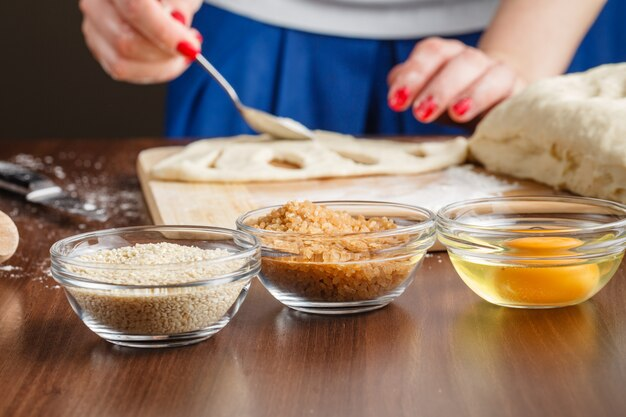Hey there, food lovers! The journey into preparing Italian cooking has begun. We should start by preparing the kitchen and moving towards cooking. Italian food employs basic ingredients while delivering abundant preference to every dish. Several cooking techniques exist to produce dishes that really shine though the methods are not complex. Let’s start cooking now with your apron ready in hand!
The Perfect Pasta
You should start with the correct choice of pasta. Shopping at your local store you can identify bronze-extruded pasta among the other products. You can find perfect results through the rough pasta surface which enhances sauce adhesion. The final result proves beyond doubt that this technique works effectively.
To achieve the perfect pasta results you should boil your noodles for 2-3 minutes shorter than the suggested time on the package directions. Sounds crazy, right? This strange approach has a purpose behind it.
Reserve some of the starchy liquid which remains in the pasta cooking water after draining it. It’s liquid gold! Recombine the pasta with a combination of reserve cooking water and sauce inside the same pot until ready. Allow this mixture to cook for the remaining few minutes. Sauce application during this step is the critical process which makes certain all noodles receive perfect coverage.
Sauces That Sing
The foundation of Italian cooking requires constructing various flavors through thorough preparation. The traditional Italian sauces offer unique ways to stimulate your taste senses.
Bolognese: The King of Meat Sauces
Bolognese serves as more than mere fast food for evening meals. It’s a labor of love. The secret? Take your time. Seriously, don’t rush it. Preliminary cooking of vegetables and aromatics lasts almost an hour in a hot pan. You must have misread because the cooking time reaches an astounding hour. Meat goes into the pot only after the proper building of flavors through the entire process. You should let this prolonged cooking technique develop deep complex tastes that are amazing.
Cacio e Pepe: Simple Yet Sophisticated
Cacio e Pepe means “cheese and pepper” in Italian language. This easy recipe proves difficult to master when looking to achieve perfection. The key is in the technique. Place the pasta in boiling water and allow it to cook until ready but slightly underdone. Then continue cooking it with hot pasta water and freshly ground black pepper as well as finely grated Pecorino Romano cheese. The secret success of this dish depends on your ability to perfectly melt the cheese so the pasta strands become perfectly coated in sauce.
Beyond Pasta: Other Italian Classics
While pasta represents a significant part of Italian cuisine there are many more dishes which characterize the traditional Italian food culture. Additional Italian recipes you should learn are detailed below:
Lasagna: A Labor of Love
Lasagna represents the perfect connection between ingredients which reassemble to form a platonic embrace. Layer upon layer of pasta, bolognese, bechamel, and Parmigiano-Reggiano. The secret? Let it rest after cooking. The combined flavors reach harmony after letting the dish rest.
Risotto: Patience Pays Off
Seldom does risotto allow for any kind of rush because slow cooking defines its entire process. You must continue stirring the pot before you add small amounts of stock. The recipe process requires patience because it results in delicious creamy perfection that makes all effort worthwhile.
Conclusion
Italian food preparation depends on three essential elements which are affection alongside time spent on the task along with superior ingredients. Your success depends on taking the right pace along with enjoying your cooking process while being willing to try new things. Remember, practice makes perfect!
Ready to start your Italian cooking adventure? Check out Infoodnito for more mouthwatering recipes and tips to bring a taste of Italy to your kitchen!



